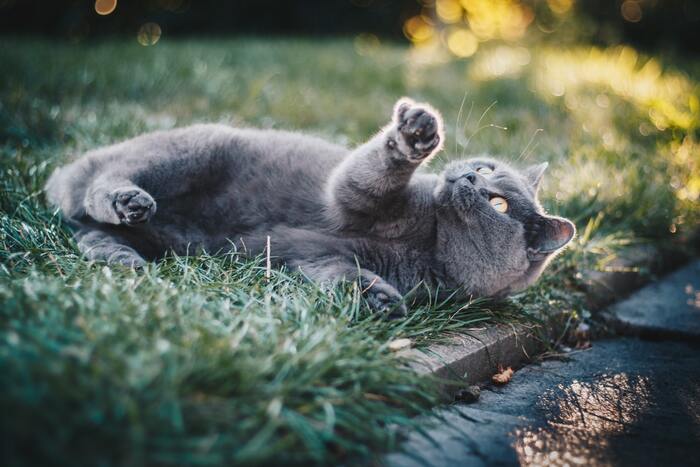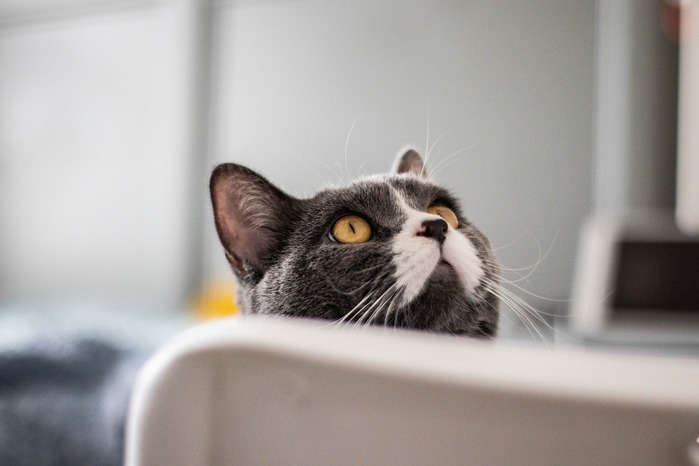How To brush your cat's teeth? Easy Steps
We independently research, review, and recommend the best products—If you buy something through our links, we may earn an affiliate commission.

Ever wondered how to keep your cat’s teeth so dazzling? The secret (well, not so much a secret) is regular dental care! Brushing your cat’s teeth might seem like a fancy extra, but it’s a simple routine you can easily incorporate into your daily cuddles. Not only will it keep your kitty’s breath smelling fresh, but it also promotes healthy gums and prevents future dental problems.
How To brush Your cat's teeth?
1. Introduce the brush and toothpaste gradually. Let your feline friend sniff and lick both to get comfortable with the taste and texture. A finger cot brushed with a tiny dab of toothpaste can be a great starting point for nervous kitties!
2. Start with gentle rubs on the outside of the teeth. Start slow! Focus on gentle rubs on the outside of the teeth with the brush. As your cat gets used to the sensation, work your way up to brushing in small circular motions, focusing on the gum line where plaque and tartar build up.
3. Keep it short & sweet. Aim for short, positive brushing sessions. Think 10–20 seconds per side of the mouth, twice a day. It’s all about consistency!
4. Patience is Pawesome! Remember, your cat may not be thrilled at first. Don’t force it! If your furry friend resists, take a break and try again later. Positive reinforcement with treats and praise goes a long way in creating a happy brushing routine for both of you.
Why Brushing Your Cat's Teeth Matters
Just like humans, cats suffer from plaque buildup and tartar formation on their teeth, including:
Gingivitis: Inflammation of the gums, causing redness, swelling, and pain.
Periodontitis: Advanced gum disease that can lead to tooth loss and jawbone deterioration.
Bad breath: Unpleasant odor emanating from the mouth.
Other health problems: Oral health issues can be linked to systemic diseases like kidney and heart problems.
Brushing your teeth on a regular basis helps to remove plaque before it hardens. Keeping your cat’s mouth healthy benefits their general health, as some studies link poor dental health to systemic disorders such as kidney and heart problems.
What tools do I need to brush my cat's teeth?

1. What type of toothbrush should I use?
When choosing a toothbrush for your feline friend, prioritize comfort and size. Here are some options to consider:
Feline-Sized Toothbrushes: Look for toothbrushes specifically designed for cats. These brushes are smaller and have softer bristles than human toothbrushes, making them gentler on your cat’s delicate gums. Popular brands include the Virbac C.E.T. Cat Toothbrush, which has an angled head for easier access to all areas of the mouth.
Finger Brushes: Finger brushes are a great alternative for cats who might be nervous about a traditional toothbrush. These silicone brushes slip onto your finger, allowing you to gently massage the teeth and gums with a small amount of toothpaste.
Tips:
Make sure the bristles are soft and won’t irritate your cat’s gums. It’s also a good idea to replace your cat’s toothbrush every 3-4 months, or sooner if the bristles become frayed.
2. What type of toothpaste should I use?
For toothpaste, opt for a cat-specific formula. Human toothpaste contains fluoride and other ingredients that are harmful to cats if swallowed. Cat toothpaste comes in flavors cats enjoy, making the brushing experience more pleasant for them.
How can I introduce tooth brushing to my cat?
1. Make it a bonding experience. Talk to your cat in a soothing voice and offer praise throughout the process.
2. Start brushing when your cat is young. Kittens are more adaptable to new routines.
3. Consider dental treats and water additives. These can supplement brushing and help maintain oral hygiene.
4. Consult your veterinarian. They can assess your cat’s oral health and provide personalized advice.
Conclusion
Remember, brushing your cat’s teeth isn’t just about pearly whites; it’s about their overall well-being. By incorporating this simple routine into their lives, you’re investing in their long-term health and happiness.

Frequently Asked Questions
According to the 2022 ISFM/AAFP Cat Friendly Veterinary Environment Guidelines published in the Journal of Feline Medicine and Surgery, the litter box should be 1.5 times the length of your cat from the nose to the tip of the tail. Whereas the width should be equivalent to your cat’s length, the tail is not included. A cat that is about 18 inches long needs a litter box that measures 27” long by 18″ wide. A litter box that most likely doesn’t exist out there. That is why it is best to select the largest and nicest litter box for your beloved cats.
It is recommended that you use a maximum of 2 inches to 4 inches of litter in your litter box. If there are numerous cats using the litter box, you’ll need 3 to 4 inches of litter to absorb all that urine and clump around.
In fact, anything less than 2 inches will cause unpleasant odors to develop as well as a high probability of inappropriate elimination. On the other hand, too much litter will lead to a mess since most cats will simply kick it outside.
If you have one cat at home, you’ll most likely need to change clumping cat litter every 2–3 weeks. However, if you’re using a non-clumping litter, you’ll have to change the litter completely twice a week.
If you have an automatic litter box, you can perform a deep cleaning once a month. Unless, of course, there is a problem of feces scattering or building up inside the litter box. You will need to clean it more often in that case.
If you have a manual litter box, the litter should be scooped and cleaned at least twice a day.
Cats love to have their cat litter boxes in a corner that is calm, private, and accessible. You’ll also need to keep food away from this spot in order to leave this space dedicated to sanitary activities.


